Samsung TV Plus Unleashes AI Revolution to Challenge Roku and Tubi in FAST Market(TV 플러스, AI 혁명으로 FAST 시장 대반전 시동..."설치만 되어 있던 서비스에서 개인 맞춤형 플랫폼으로")
- 삼성 TV 플러스 AI 기반 대규모 개편을 통해 개인화·몰입형 시청 경험을 제공.
- 새 인터페이스, 개인 맞춤 홈 화면, 라이브-VOD 통합 등으로 탐색 속도, 콘텐츠 발견성 강화
- ‘AI 하이퍼 퍼스널라이제이션’과 몰입형 브라우징 앞세워 글로벌 FAST시장 영향력 확대
- Samsung TV Plus has launched a major AI-driven upgrade delivering a personalized and immersive viewing experience.
- Enhanced features include a new streamlined interface, personalized home screen, and seamless Live-to-VOD navigation.
- Leveraging “AI hyper-personalization” and immersive browsing, the platform aims to strengthen its global leadership in the FAST market.
설치는 되어 있지만 충분히 활용되지 못했던 글로벌 FAST 삼성 TV 플러스(Samsung TV Plus)
TV플러스가 AI 혁명의 방아쇠를 당겼다. 삼성전자가 2025년 8월 13일 공개한 대대적인 UX 혁신은 8,800만 월간 활성 사용자를 보유하고도 시장 점유율에서 아쉬움을 보였던 현실을 돌파하기 위한 전략적 도전이다.
FAST와 AI의 만남은 삼성은 차세대 미디어 시장의 주도권을 노린다.
TV플러스는 AI 기반 초개인화(하이퍼 퍼스널라이제이션, Hyper-Personalization)과 몰입형 브라우징 경험을 통해 3,500개 글로벌 채널을 개인별 맞춤형으로 재구성, 더 이상 끝없는 스크롤 속에서 길을 잃지 않는 '나만의 TV'로 FAST(무료 광고 기반 스트리밍)를 재정의한다. 로쿠(Roku) 채널 2.5%, 투비(Tubi) 2.2%가 미국 TV 시청 점유율을 차지하는 가운데 상대적으로 저조한 성과를 보였던 삼성이, 전 세계 스마트 TV 1위의 하드웨어 파워와 AI 기술력을 결합해 FAST 시장에서 주목받는 플레이어로 도약을 예고한 것이다.
이번 UX 혁신은 2025년형 일부 모델에서 먼저 적용되며, 점진적으로 확대될 예정이다. 기존 모델에도 가능한 범위 내에서 업데이트를 제공할 계획이며, 갤럭시 디바이스 앱도 순차적으로 개선된다. 특히 갤럭시와의 연동을 강화해, 모바일과 TV 간 끊김 없는 시청 경험을 제공하는 것이 목표다.
Samsung TV Plus Unleashes AI Revolution to Challenge Roku and Tubi in $5.5B FAST Market
Major AI-powered redesign introduces hyper-personalization and immersive browsing to transform free streaming experience
Samsung Electronics has launched a comprehensive AI-driven overhaul of Samsung TV Plus, its free ad-supported streaming television (FAST) platform, aiming to convert its massive hardware advantage into meaningful market share in the rapidly growing FAST sector currently dominated by Roku Channel and Tubi.
The strategic redesign, announced August 13, 2025, represents Samsung's most ambitious attempt to leverage its position as the world's leading smart TV manufacturer to capture a larger slice of the $5.5 billion FAST market, where it has struggled despite having 88 million monthly active users across 630 million devices globally.
The AI Transformation: From Passive Installation to Active Engagement
At the heart of Samsung's strategy is what the company calls "AI hyper-personalization" – a sophisticated machine learning system that transforms 3,500 global channels into individually curated experiences for each user. The platform now analyzes viewing patterns, engagement habits, and content preferences in real-time to automatically surface the most relevant channels, programs, and genres on the home screen.
"This is our smartest and most visually stunning update powered by AI at its core," said Salek Brodsky, Senior Vice President and Global Head of Samsung TV Plus. "We're not just providing an intuitive and personalized FAST experience – we're bringing to life the true depth and breadth of quality programming available."
The personalization engine goes beyond simple recommendations. It adapts to temporal patterns, presenting business news and weather in the morning, lifestyle content at lunch, prime-time dramas in the evening, and movies late at night on weekdays. Weekend curation shifts to kids' content and cooking shows on Saturday mornings, sports in the afternoon, and documentaries on Sunday evenings.
Addressing the Paradox: Massive Reach, Minimal Impact
Despite Samsung TV Plus being pre-installed on every Samsung smart TV – giving it prime placement on the world's best-selling TV brand – the platform has failed to register meaningful viewership. According to Nielsen's June 2025 "The Gauge" report, while Roku Channel commands 2.5% of total U.S. TV viewing and Tubi holds 2.2%, Samsung TV Plus doesn't even appear in measurable rankings, indicating less than 0.5% market share.
This underperformance is particularly striking given Samsung's hardware dominance. The company's Tizen OS is the second most widely deployed TV operating system in the U.S. after Roku, and Samsung maintains the top position in global smart TV sales. Yet this hardware advantage hasn't translated into streaming success – a gap the AI overhaul aims to bridge.
Key Features of the AI-Powered Platform
Immersive Browsing Experience
The redesigned interface eliminates the endless scrolling that plagued the previous version. Rich metadata, high-quality thumbnails, and dynamic previews provide immediate context for content discovery. The AI ensures users find desired content within the first screen of options, dramatically reducing browse time.
Personalized Home Screen
Machine learning algorithms create unique home screens for each of the 88 million users, automatically placing their most likely viewing choices front and center based on historical patterns, time of day, and even seasonal preferences.
Enhanced Discovery Engine
The "turbocharged discovery engine" uses advanced ML to identify content users don't yet know they want. It analyzes "taste clusters" to surface hidden gems and new releases that align with individual preferences, moving beyond simple popularity-based recommendations.
Linear-to-VOD Integration
Users can seamlessly switch between live broadcasts and on-demand content. Watching a live drama? Instantly access previous episodes. Following a sports match? Jump to highlights or full replays without leaving the platform.
Live Events Spotlight
Real-time content like sports, concerts, and breaking news receives priority placement. The AI learns which live events matter to each user – from specific sports leagues to favorite artists – and ensures they "never miss a moment."

Revolutionary Advertising: From Interruption to Interaction
Samsung is also reimagining the advertising model crucial to FAST platforms. The company's "GameBreaks" feature transforms traditional commercial breaks into interactive gaming experiences. Instead of passive ad viewing, viewers engage with short, brand-themed games using their remote or mobile device.
Early results show GameBreaks ads achieve 53% higher unaided brand recall and 1.5x engagement rates compared to traditional video ads. Post-viewing surveys indicate 89% of users prefer the GameBreaks format to conventional advertising.
The AI-powered ad targeting goes deeper, analyzing viewing history, preferences, and time patterns to serve highly relevant advertisements. Business news viewers see financial services ads in the morning, while weekend sports fans receive targeted product promotions. Dynamic Ad Insertion ensures each viewer sees different commercials even when watching the same program.
Global Ambitions with Local Execution
Operating across 30 countries with content in multiple languages, Samsung TV Plus faces the complex challenge of global scale with local relevance. The platform offers 750 channels in the U.S. alone, with region-specific curation: K-dramas and K-pop in Korea, Bollywood and cricket in India, and localized news and entertainment across Europe.
The company recently added TV5MONDE in France and continues expanding exclusive channels like Conan O'Brien TV and Letterman TV. This content strategy combines global premium programming with hyperlocal relevance, all unified through AI-powered personalization.
Industry Impact and Market Dynamics
Industry analysts view Samsung's AI push as potentially game-changing for the FAST sector. "The combination of Samsung's hardware infrastructure and AI technology could create powerful synergies," notes one industry expert. "If executed properly, this could bring meaningful change to the FAST market."
The timing is critical. The FAST market is projected to reach $12 billion by 2027, with advertisers increasingly shifting budgets from traditional TV to streaming platforms. Samsung's ability to offer sophisticated targeting on free, ad-supported content could capture significant advertiser interest.
However, challenges remain substantial. User habits are entrenched, with many viewers already loyal to Roku or Tubi. Competitors aren't standing still – both Roku and Tubi are expanding their own AI investments, while tech giants like Google and Amazon eye the FAST opportunity.
The Broader Implications: Redefining Free Streaming
Samsung's transformation of TV Plus represents more than a product update – it's a fundamental reimagining of what free streaming can be. By applying AI sophistication typically reserved for premium services, Samsung is challenging the assumption that free means inferior.
The platform's evolution also highlights the growing importance of hardware-software integration in streaming. As a device manufacturer operating a content platform, Samsung can optimize at levels pure software players cannot – from remote control integration to picture quality optimization.
Looking Forward: From Hardware Giant to Streaming Player
The success of Samsung's AI gambit will be measured not just in market share gains, but in its ability to change user behavior. Can AI personalization overcome the inertia of 630 million devices where TV Plus sits largely unused? Can sophisticated curation make 3,500 channels feel like a curated selection rather than overwhelming choice?
Initial rollout begins with select 2025 TV models, with gradual expansion to existing devices where technically feasible. The Galaxy device app will also receive updates, strengthening the mobile-to-TV viewing continuity.
For Samsung, this represents a pivotal moment. The company has the hardware dominance, the technical capability, and now the AI-powered platform to potentially disrupt the FAST market. Whether viewers will embrace this transformation remains the multi-billion-dollar question.
As the streaming wars evolve beyond subscription services to include free, ad-supported platforms, Samsung TV Plus's AI revolution may signal a new phase where technology giants leverage their ecosystem advantages to challenge pure-play streaming services. In this context, Samsung's move isn't just about winning in FAST – it's about demonstrating that the future of streaming may belong to those who can seamlessly blend hardware, software, and AI into unified entertainment experiences.
The next 12-18 months will prove critical as Samsung races to convert its latent advantage into active viewership, potentially reshaping not just its own fortunes, but the entire trajectory of free streaming television.
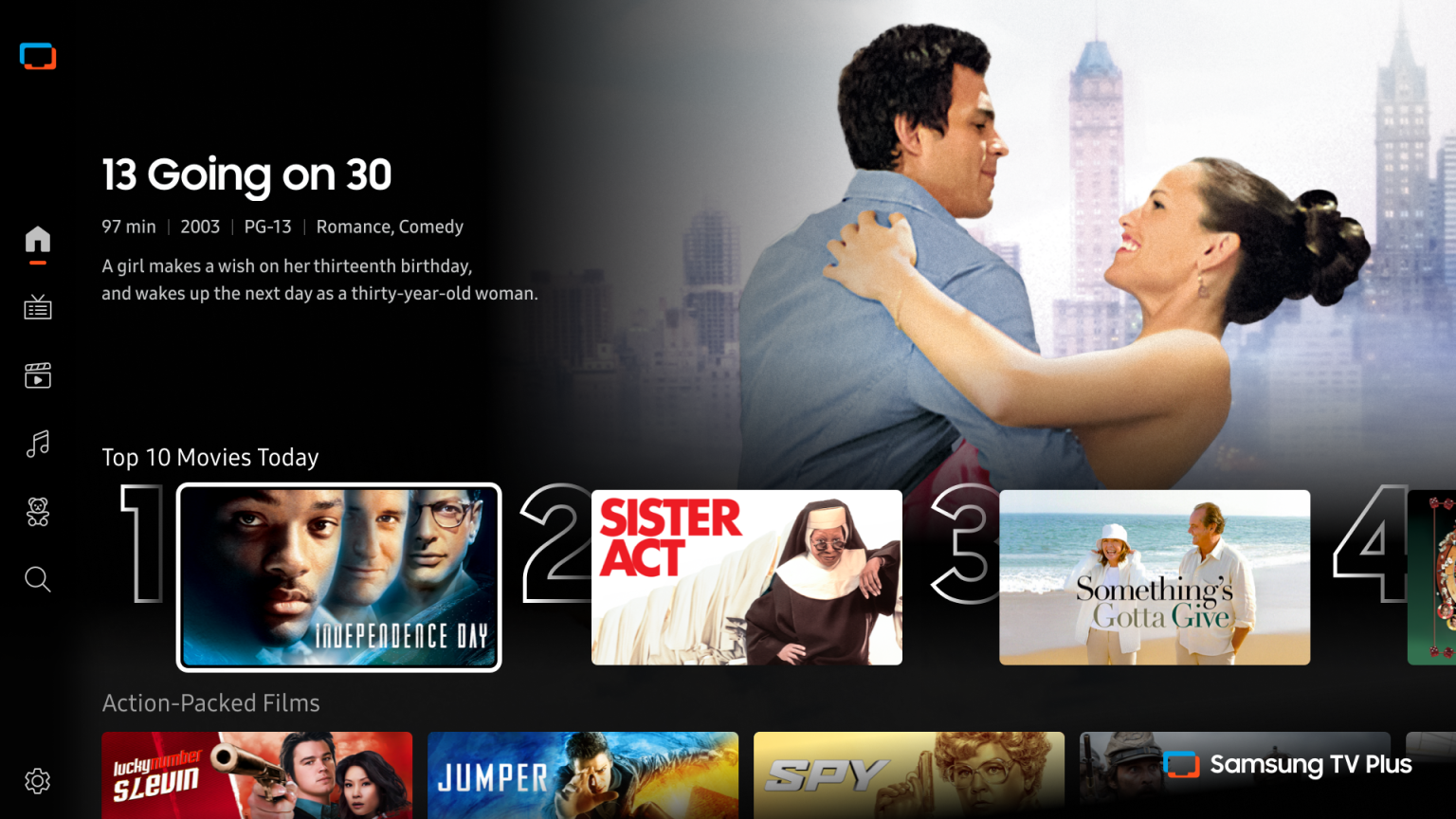
삼성 TV 플러스 개편 주요 기능
몰입형 브라우징 경험 (Immersive Browsing Experience)
- 새 디자인 & 직관적 UI: 화면 전환과 메뉴 구조가 단순·명확해져 복잡한 채널 그리드를 최소화.
- 리치 메타데이터 & 고화질 썸네일: 프로그램·채널·장르에 대한 정보(출연진, 장르 태그, 평점, 줄거리)가 시각적으로 강화되어, 사용자는 보지 않아도 ‘무엇을 기대할지’ 명확히 판단 가능.
- 탐색 피로도 감소: 기존 끝없는 스크롤 대신, 콘텐트가 ‘섹션별로 맥락 있게’ 제시되어 선택 과정이 빨라짐.
개인화 홈 화면 (Personalized Home Screen)
- AI 취향 분석: 시청 이력, 채널 체류 시간, 클릭 패턴 등을 머신러닝이 분석해 시청자별 선호를 실시간 업데이트.
- 1:1 맞춤 배치: 좋아하는 장르·채널·배우의 콘텐츠가 홈 화면 첫 구역에 자동 노출.
- 라이프스타일 기반 추천: 예를 들어, 주말 저녁 스포츠, 평일 밤 드라마, 아침 뉴스 등 시간대·요일별 맞춤 편성 가능.
강화된 추천 엔진 (Enhanced Discovery Engine)
- 머신러닝 기반 ‘발견 엔진’: 기존 단순 인기순 추천이 아닌 사용자의 ‘취향 클러스터’를 분석, 선호할 가능성이 높은 신작·숨은 명작을 비중 있게 노출.
- ‘파고들기(Deep Dive) 모드’를 통해, 시청 중인 프로그램과 관련된 배우 작품·비슷한 장르 목록을 즉시 제안.
- 사용자가 채널 탐색에 할애하는 시간을 대폭 축소 → 콘텐츠 소비 시간 비율 상승 예상.
선형(라이브)-VOD 통합 (Linear-to-VOD Integration)
- 무중단 전환: 예를 들어, 라이브 드라마 시청 중 과거 회차나 관련 스핀오프를 VOD로 즉시 재생 가능.
- 스포츠 경기 라이브 중 하이라이트 즉시 호출, 경기 종료 후 전체 리플레이 시청 가능.
- 방송사·콘텐츠 공급사 입장에서는 콘텐츠 재활용 가치가 극대화됨.
라이브 이벤트 스포트라이트 (Live Events Spotlight)
- 스포츠·콘서트·속보·e스포츠·대형 시상식 등 ‘지금만 볼 수 있는 콘텐츠’를 홈 화면 최상단에 강화 표시.
- 개인화 엔진을 통해, 사용자가 평소 즐겨보는 종목·아티스트·리그의 이벤트를 우선 노출.
- 실시간 알림 기능으로 FOMO(놓칠까 두려움) 최소화 → 라이브 시청률 상승.
AI가 만드는 8,800만 개의 서로 다른 TV 경험
삼성 TV 플러스의 이번 혁신 핵심은 AI를 통한 완전한 개인화다. 살렉 브로드스키(Salek Brodsky) 삼성 TV 플러스 수석 부사장 겸 글로벌 총괄은 인터뷰에서 "AI를 핵심으로 한 대담한 새 디자인으로, 우리가 선보인 가장 스마트하고 시각적으로 놀라운 업데이트"라며 "이러한 혁신을 통해 FAST에 매우 직관적이고 개인화된 경험을 제공할 뿐만 아니라, 고품질 프로그래밍의 진정한 깊이와 폭을 생생하게 구현했다"고 설명했다.
새로운 개인화 홈 스크린은 단순한 콘텐츠 추천을 넘어선다. 머신러닝 알고리즘이 개별 사용자의 시청 패턴, 참여 습관, 선호 장르를 실시간으로 학습해 가장 관련성 높은 채널, 프로그램, 장르를 자동으로 전면에 배치한다.
시간대별, 요일별, 계절별로 다른 콘텐츠를 제시하는 것은 물론, 사용자가 찾고자 하는 콘텐츠를 예측해 선제적으로 제안하는 '터보차지드 디스커버리 엔진(Turbocharged Discovery Engine)'이 핵심이다.
이 엔진은 단순히 "당신이 좋아할 만한" 콘텐츠를 추천하는 것이 아닌 예를 들어, 평일 아침에는 비즈니스 뉴스와 날씨 채널을, 점심시간에는 라이프스타일 프로그램을, 저녁에는 프라임타임 드라마를, 심야에는 영화 채널을 자동으로 우선 배치하는 방식이다.
주말에는 또 다른 큐레이션이 작동한다. 토요일 오전에는 키즈 콘텐츠와 요리 프로그램을, 오후에는 스포츠 중계를, 일요일 저녁에는 다큐멘터리와 시사 프로그램을 제안하는 식이다. 이는 미국 내 750개, 전 세계 3,500개 이상의 방대한 채널을 각 사용자에게 최적화된 형태로 제시하는 혁신적 접근이다.
더 나아가 AI는 사용자의 시청 컨텍스트까지 고려한다. 특정 장르를 연속으로 시청한 패턴을 분석해 그날의 기분이나 상황을 파악하고, 그에 맞는 콘텐츠를 제안한다. 코미디를 자주 찾는 시기에는 유머러스한 콘텐츠를 중심으로, 다큐멘터리를 선호하는 시기에는 교양 프로그램을 중심으로 홈 화면을 구성하는 것이다. 이는 기존 스트리밍 서비스들의 추천 알고리즘을 한 단계 뛰어넘는 수준의 개인화로, FAST 플랫폼으로서는 처음하는 시도다.
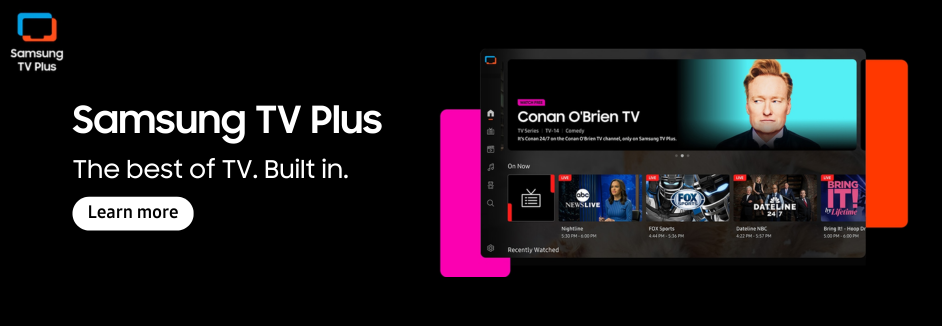
스크롤 부담 해소: 몰입형 브라우징이 만드는 새로운 경험
그동안 삼성 TV 플러스의 과제 중 하나는 '선택의 과부하'였다. 사용자들은 3,500개 채널 속에서 원하는 콘텐츠를 찾기 위해 상당한 시간을 소비해야 했고, 이는 사용자 경험에 부정적 영향을 미쳤다. 이번에 도입된 '몰입형 브라우징 경험(Immersive Browsing Experience)'은 이러한 문제를 근본적으로 개선한다.
TV플러스의 새 디자인과 인터페이스는 내비게이션을 단순화하면서도, 풍부한 메타데이터와 고품질 이미지를 통해 더 명확한 컨텍스트를 제공한다. 각 채널과 프로그램은 단순한 제목과 썸네일이 아닌, 동적 프리뷰, 실시간 시청 정보, 관련 콘텐츠 추천 등 다층적 정보와 함께 제시된다. 사용자들은 텍스트 위주의 목록이 아닌, 시각적으로 풍부하고 직관적인 콘텐츠 갤러리를 탐색하게 된다.
특히 주목할 것은 스크롤을 최소화하려는 노력이다. AI가 사용자의 취향을 이해하고 큐레이션된 제안과 인기 콘텐츠를 제시해, "더 이상 파고들 필요가 없는(no digging required)" 경험을 제공한다는 것이 목표다.
첫 화면에 제시된 옵션 중에서 원하는 콘텐츠를 찾을 가능성을 크게 높이려는 전략이다. 삼성 내부 테스트에 따르면, 사용자들이 원하는 콘텐츠를 찾는 시간이 상당히 단축되었으며, 이는 전반적인 사용자 만족도 향상으로 이어질 것으로 기대된다.
새로운 UI는 또한 '컨텍스트 인식 디자인(Context-Aware Design)'을 채택했다. TV 화면 크기, 시청 환경 등을 고려해 최적의 레이아웃과 시각적 요소를 조정한다. 대형 TV에서는 더 많은 콘텐츠를 한 화면에 표시하고, 중소형 TV에서는 가독성과 선택의 용이성을 우선시하는 방식이다. 이는 삼성이 TV 제조사로서 축적한 하드웨어 이해도를 소프트웨어에 반영한 결과다.
실시간 채널과 VOD의 통합: FAST 진화의 새로운 방향
'Linear-to-VOD Integration'은 실시간 방송과 주문형 콘텐츠 간의 자연스러운 전환을 가능하게 한다. 이는 단순한 기능 추가가 아니라 시청 방식의 근본적 변화를 의미한다. 드라마를 실시간으로 시청하다가 놓친 부분이 있다면 간단하게 되돌려 볼 수 있고, 스포츠 중계를 보다가 주요 장면을 다시 보고 싶다면 즉시 하이라이트를 재생할 수 있다.
'스마트 캐치업(Smart Catch-up)' 기능은 시리즈물을 중간부터 시청하는 사용자를 위한 배려다. AI가 자동으로 이전 줄거리를 요약해 제공하며, 사용자는 원하는 수준의 요약을 선택할 수 있다. 간단한 하이라이트부터 상세한 줄거리 설명까지, 다양한 옵션이 제공된다. 이는 레거시 TV의 즉시성과 스트리밍의 유연성을 조화롭게 결합한 것으로, "궁극의 유연성을 위해 자신만의 방식으로 시청(watch your way for the ultimate flexibility)"할 수 있게 한다.
'타임시프트 뷰잉(Timeshift Viewing)' 기능도 주목할 만하다. 프라임타임 프로그램을 놓쳤다면, AI가 재방송 시간이나 VOD 제공 시점을 안내하고, 사용자의 평소 시청 패턴을 고려해 최적의 시청 시간을 제안한다. 이는 바쁜 현대인의 라이프스타일에 맞춘 실용적인 기능이다.
라이브 이벤트 스포트라이트(Live Events Spotlight) 기능은 실시간 콘텐츠의 가치를 극대화한다. 스포츠, 콘서트, 뉴스 속보 같은 실시간 콘텐츠의 발견을 개선해 "시청자들이 한 순간도 놓치지 않도록(never miss a moment)" 돕는다. AI가 사용자의 관심사를 파악해 관련 라이브 이벤트를 사전에 알려주고, 다양한 부가 정보를 제공한다.
예를 들어 스포츠 경기의 경우, 경기 전 양 팀의 최근 성적과 주요 정보를 제공하고, 경기 중에는 실시간 통계를 표시하며, 경기 후에는 하이라이트와 분석을 자동으로 큐레이션한다. 멀티뷰 옵션으로 여러 경기를 동시에 시청할 수 있으며, AI가 중요한 순간을 감지해 화면 전환을 제안하는 기능도 포함된다.
현재 위치와 성장 잠재력: 데이터가 말하는 도전과 기회
삼성 TV 플러스의 현재 위치는 '압도적 인프라'와 '아쉬운 활용도'라는 극명한 대조를 보여준다. 객관적 데이터를 통해 강점과 약점, 그리고 성장 가능성을 명확히 분석해보자.
강점: 압도적 규모와 독보적 인프라
삼성 TV 플러스가 보유한 자산은 객관적으로 인상적이다. 글로벌 도달 범위는 타의 추종을 불허한다. 전 세계 30개국에서 서비스되며, 6억 3천만 개 이상의 활성 디바이스에서 접근 가능하다. 이는 단일 FAST 플랫폼으로는 최대 규모다. 8,800만 명의 월간 활성 사용자(MAU)는 많은 유료 스트리밍 서비스를 능가하는 수치다.
콘텐츠 규모도 압도적이다. 전 세계 3,500개 이상의 채널, 미국 내 750개 채널은 어떤 FAST 플랫폼도 따라오기 힘든 방대한 라이브러리다. 특히 코난 오브라이언 TV, 레터맨 TV 같은 독점 채널 확보는 차별화된 경쟁력이다. 삼성은 이를 "삼성 스마트 TV에서 가장 많이 사용되는 스트리밍 앱"이라고 자신 있게 표현한다.
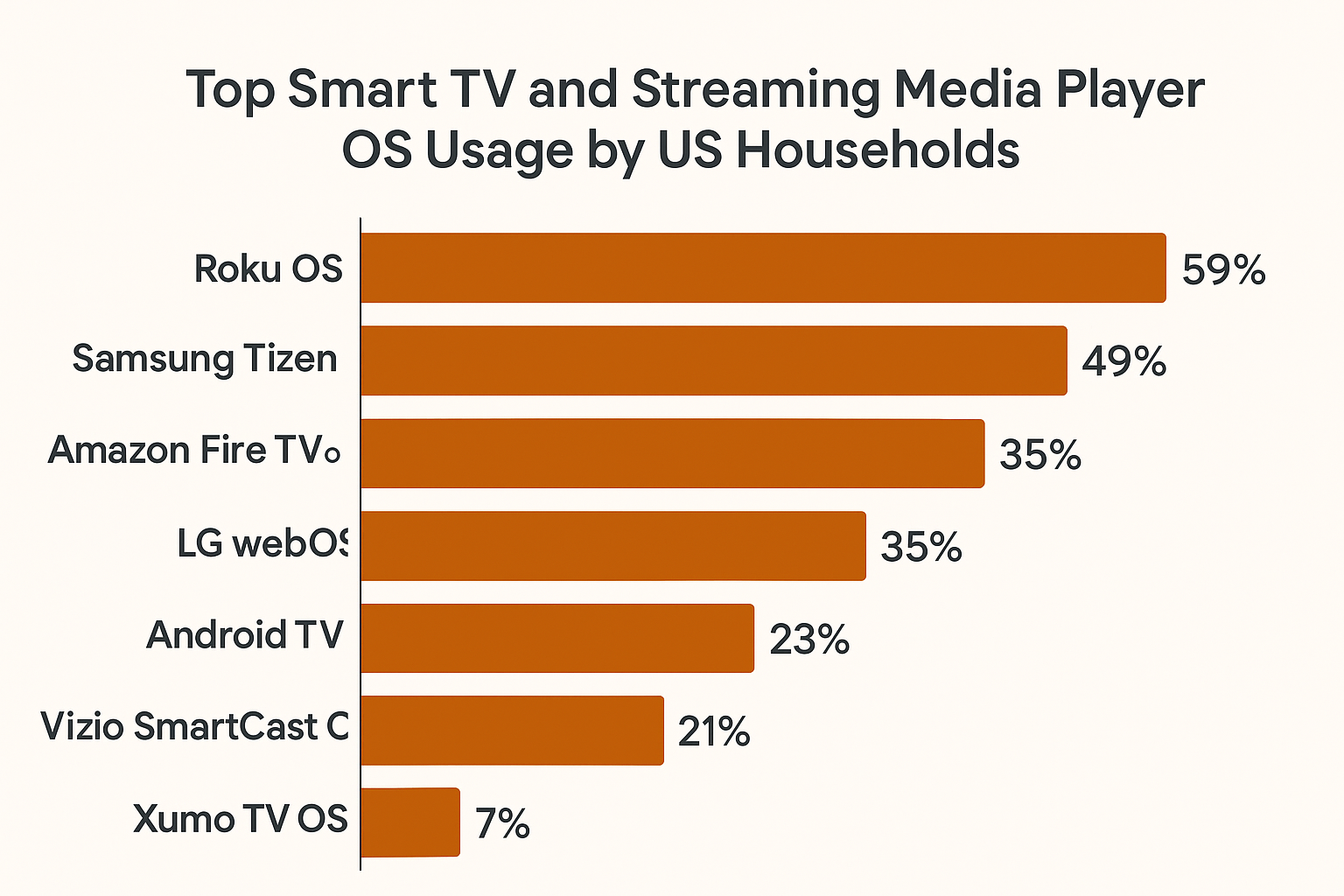
하드웨어 지배력은 삼성만의 독특한 강점이다. 허브 엔터테인먼트 리서치에 따르면, 삼성의 타이젠 OS는 미국에서 로쿠에 이어 두 번째로 널리 보급된 TV 운영체제다. 전 세계 스마트 TV 시장 1위, 북미 시장 1위라는 위치는 경쟁사가 절대 복제할 수 없는 자산이다. 삼성 스마트 TV를 켜면 가장 먼저 나타나는 화면이 삼성 TV 플러스라는 점은 엄청난 이점이다. 이는 제로 마케팅 비용으로 수억 명에게 노출되는 프리미엄 위치를 의미한다.
성장 모멘텀도 형성되고 있다. 2024년 10월 발표한 전년 대비 50% 시청률 증가는 플랫폼이 올바른 방향으로 움직이고 있음을 시사한다. 절대 수치는 낮을지라도, 성장 속도가 가속화되고 있다는 점은 긍정적이다.
약점: 낮은 실제 사용률과 시장 존재감 부족
그러나 실제 성과는 이러한 잠재력에 크게 못 미친다. 시장 점유율 측면에서 사실상 존재감이 없다. 닐슨의 2025년 6월 'The Gauge' 리포트는 냉정한 현실을 보여준다. 로쿠 채널이 미국 전체 TV 시청의 2.5%, 투비가 2.2%를 차지하는 동안, 삼성 TV 플러스는 측정 가능한 순위에조차 포함되지 못했다. 이는 0.5% 미만의 점유율을 의미하며, 유료 서비스인 HBO 맥스(1.4%)보다도 낮은 수준이다.
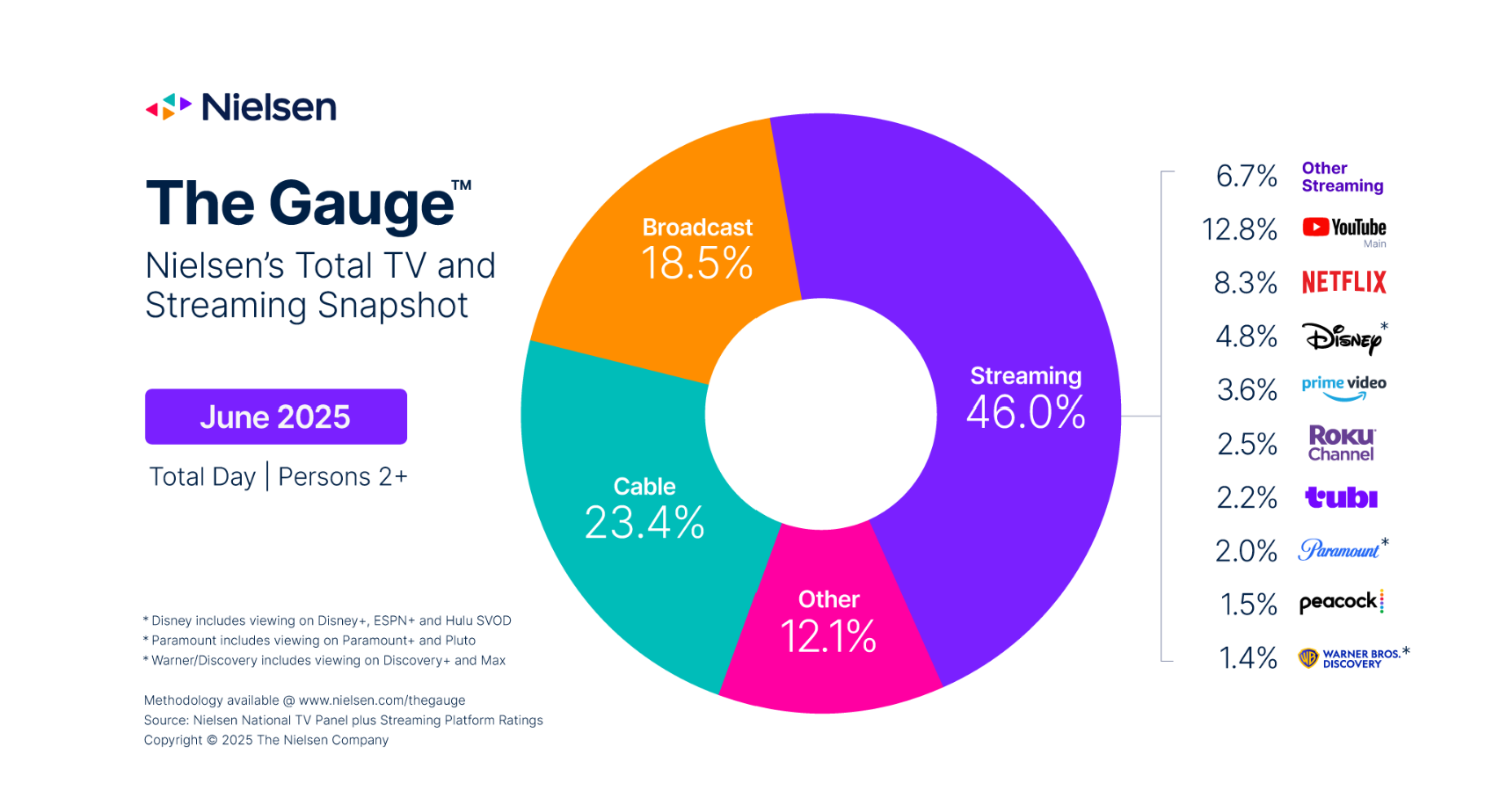
가구 침투율도 실망스럽다. ARF-DASH TV 유니버스 스터디에 따르면, 미국 가구 침투율에서 삼성 TV 플러스는 투비, 로쿠 채널, 플루토 TV에 현저히 뒤처진다. 타이젠 OS가 미국 스마트 TV OS 2위임을 고려하면, 이는 명백한 실패다.
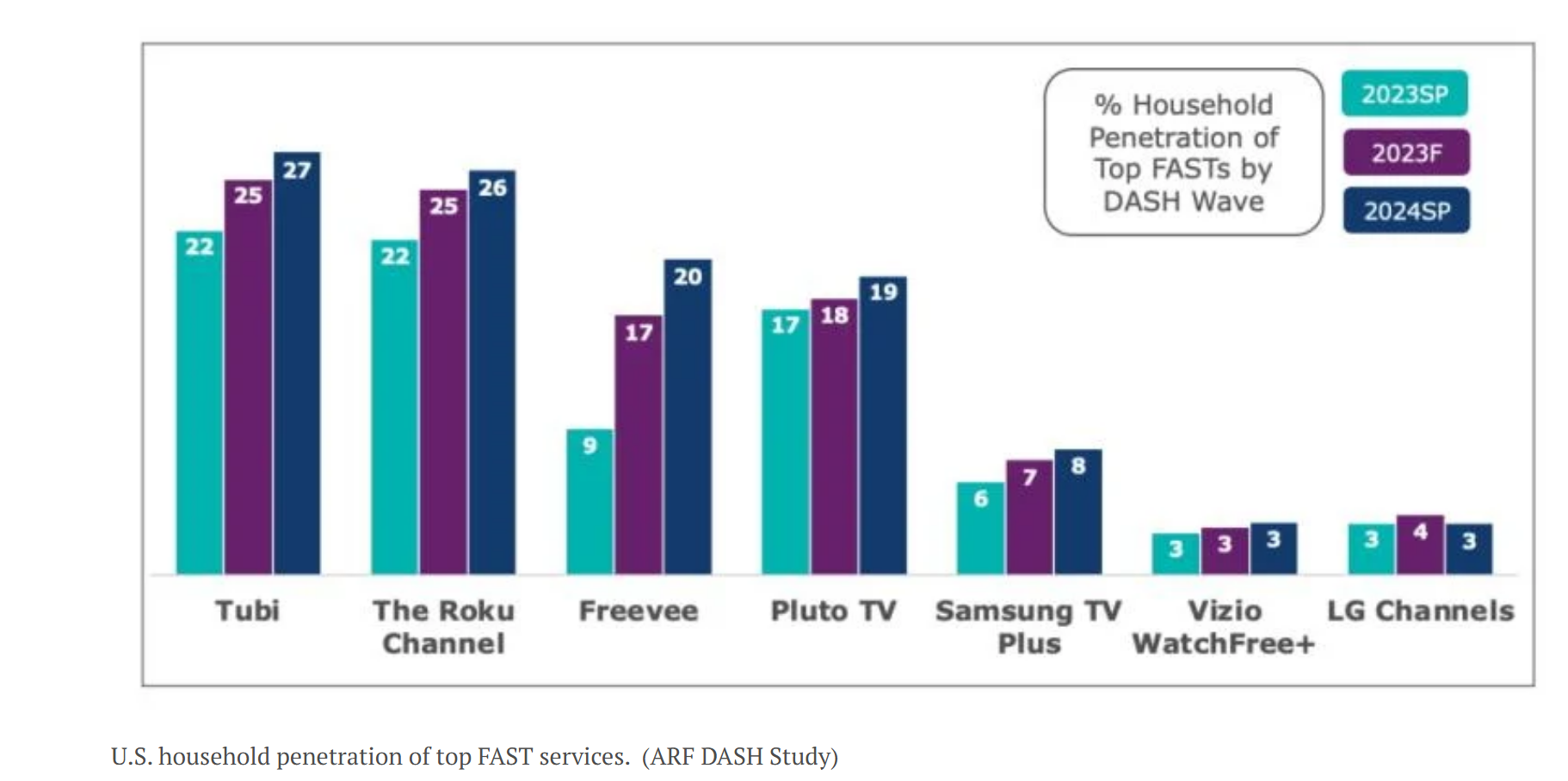
사용자 참여도가 낮다는 것이 핵심 문제다. 8,800만 MAU를 자랑하지만, 실제 일일 활성 사용자(DAU)는 극히 낮은 것으로 추정된다. 업계 추정에 따르면 MAU 대비 DAU 비율이 10% 미만으로, 대부분의 사용자가 가끔씩만 서비스를 이용하거나 아예 사용하지 않는다는 의미다.
브랜드 인지도와 충성도 부족도 명확한 약점이다. 로쿠 채널이나 투비는 독립적인 브랜드 파워를 구축했지만, 삼성 TV 플러스는 여전히 'TV에 함께 제공되는 부가 서비스' 정도로 인식된다. 사용자들이 의도적으로 찾아서 사용하는 서비스가 아닌, '그냥 있으니까 가끔 보는' 수준에 머물러 있다.
기회: AI 혁신이 여는 성장 잠재력
때문에 이번 AI 기반 UX 혁신은 이러한 약점을 강점으로 전환할 수 있는 절호의 기회다. 첫 화면 최적화를 통해 사용자 이탈을 막을 수 있다. AI가 사용자가 원하는 콘텐츠를 즉시 제시한다면, 다른 앱으로 이동할 이유가 줄어든다. 삼성 TV를 켜자마자 보이는 첫 화면의 프리미엄 위치를 제대로 활용할 수 있게 되는 것이다.
3,500개 채널의 가치 실현도 가능해진다. 그동안 '너무 많아서 오히려 부담'이었던 방대한 콘텐츠가 AI 큐레이션을 통해 '나에게 맞는 10-20개 채널'로 압축된다면, 진정한 차별화 요소가 될 수 있다.
하드웨어-소프트웨어 시너지를 극대화할 수 있다. TV 제조사만이 할 수 있는 깊은 수준의 통합 - 리모컨 최적화, 음성 명령, 화질 최적화 등 - 을 통해 경쟁사가 따라올 수 없는 경험을 제공할 수 있다.
글로벌 규모의 경제를 실현할 기회도 있다. 88개국에서 수집되는 방대한 데이터를 AI 학습에 활용하면, 어떤 경쟁사보다 정교한 추천 시스템을 구축할 수 있다. 각 지역의 특성을 반영하면서도 글로벌 트렌드를 파악하는 독특한 위치에 있다.
위협: 극복해야 할 구조적 도전
동시에 무시할 수 없는 위협 요소들도 존재한다. 고착화된 사용자 습관은 가장 큰 장벽이다. 이미 로쿠나 투비에 익숙한 사용자들을 전환시키는 것은 단순히 좋은 기능을 제공하는 것 이상의 노력이 필요하다.
경쟁사의 빠른 대응도 변수다. 로쿠와 투비는 이미 AI 투자를 확대하고 있으며, 구글과 아마존 같은 거대 기술 기업들도 FAST 시장을 주시하고 있다. 삼성의 혁신이 성과를 내기 전에 경쟁사들이 유사하거나 더 나은 기능을 출시할 가능성이 있다.
투자 대비 수익의 불확실성도 리스크다. AI 시스템 구축과 운영에는 막대한 비용이 소요되지만, 이것이 실제 사용률 증가와 광고 수익 향상으로 이어질지는 미지수다.

글로벌 확장과 콘텐츠 전략: 3,500개 채널의 다양성 추구
삼성은 콘텐츠 확충에 지속적으로 투자하고 있다. 이번 주 TV플러스에 프랑스에 TV5MONDE를 추가한 것은 지역별 맞춤 전략의 일환이다. 삼성 TV 플러스는 각 지역의 특성을 고려한 차별화된 콘텐츠 전략을 추진한다. 미국에서는 750개 채널을 제공하며 스포츠와 뉴스, 엔터테인먼트에 중점을 둔다. 유럽에서는 각국의 공영방송 및 지역 콘텐츠 제공자와 협력하고, 아시아에서는 K-콘텐츠와 현지 인기 프로그램을 강화하고 있다.
독점 콘텐츠 확보도 중요한 전략이다. 코난 오브라이언 TV, 레터맨 TV 같은 유명 크리에이터 전용 채널은 차별화 요소다. 삼성은 콘텐츠 제작사, 스튜디오들과 직접 협력해 클래식 영화, 독립영화, 다큐멘터리 등 다양한 장르의 전문 채널을 지속적으로 추가하고 있다. e스포츠, 팟캐스트, 크리에이터 콘텐츠 등 새로운 형태의 콘텐츠도 적극 수용해 젊은 세대의 관심을 끌고 있다.
삼성 TV 플러스는 삼성 TV, 갤럭시 디바이스, 스마트 모니터, 패밀리 허브 등 다양한 기기에서 이용 가능하다. 특히 2025년형 TV 시리즈는 삼성 비전 AI(Samsung Vision AI)로 구동되어 AI 강화 화질과 음질, 새로운 개인화 기능을 제공한다. Neo QLED 8K, Neo QLED 4K, OLED, The Frame, The Frame Pro 등 프리미엄 라인업은 AI 업스케일링을 통해 콘텐츠를 최적의 품질로 재생한다.
광고 혁신과 비즈니스 모델의 진화
FAST 플랫폼의 핵심은 광고 수익 모델이다. 삼성은 이 영역에서도 혁신적인 접근을 시도한다. 최근 삼성 TV플러스는 '게임브레이크(GameBreaks)'라는 전통적인 광고 형식을 재해석하는 기능을 내놨다. 시청자가 수동적으로 광고를 시청하는 대신, 짧은 인터랙티브 게임을 통해 브랜드와 상호작용하는 방식이다. 게임브레이크는 광고의 본질을 ‘비활동적 시청’에서 ‘능동적 참여’로 전환시킴으로써, 광고 효과와 시청자 만족도를 동시에 높이는 삼성의 대표적 인터랙티브 광고 혁신이다. 브랜드는 기억에 남는 순간을 만들고, 시청자는 단순한 광고가 아닌 ‘경험하는 시간’을 갖게 된다.
자동차 브랜드는 간단한 드라이빙 게임을, 식음료 브랜드는 재료 매칭 게임을 제공하는 등 브랜드 특성에 맞는 경험을 설계한다.광고 중간에 퀴즈·단어맞추기·기억력 테스트 등 다양한 ‘스낵형’ 게임이 제공되어, 시청자는 리모컨이나 모바일 기기로 즉시 참여할 수 있다.
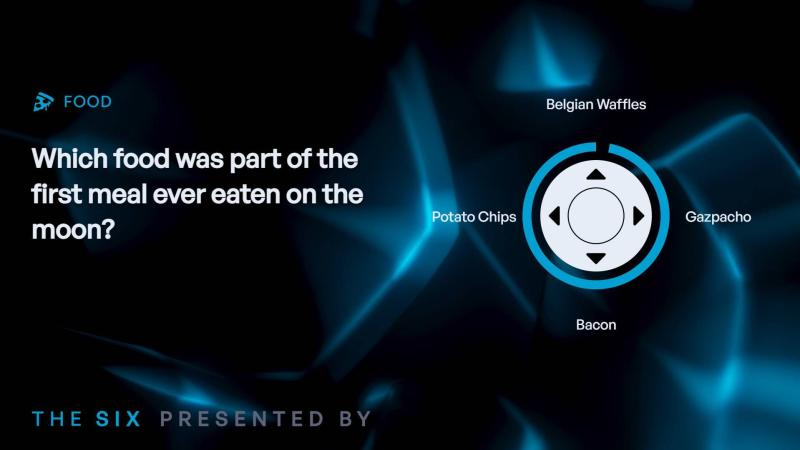
실험 결과, 게임브레이크 광고는 전통적 영상 광고 대비 브랜드 비보조 기억률(unaided recall) 53% 증가, 참여율 1.5배 상승을 기록했다. 실제로 광고 후 89%의 시청자가 기존 광고보다 게임브레이크 포맷을 선호한다고 응답했다.
특히, AI는 광고 타겟팅의 정교함을 높인다. 사용자의 시청 이력, 선호도, 시청 시간대 등을 분석해 관련성 높은 광고를 제시한다. 아침 시간대 비즈니스 뉴스 시청자에게는 금융 서비스 광고를, 주말 스포츠 시청자에게는 관련 제품 광고를 보여주는 방식이다. 이는 광고주에게는 효율적인 타겟팅을, 시청자에게는 관련성 있는 광고 경험을 제공한다.
'다이내믹 애드 인서션(Dynamic Ad Insertion)' 기술로 같은 프로그램을 시청해도 각 사용자는 다른 광고를 보게 된다. 'Sequential Messaging'을 통해 하나의 캠페인을 여러 단계로 나누어 스토리텔링 방식으로 전달하는 것도 가능하다. 광고 성과 측정도 더욱 정밀해져, 노출 수와 완료율뿐 아니라 브랜드 인지도 변화와 구매 의향까지 추적할 수 있다.
글로벌 플랫폼의 도전: 다양성 속의 통일성 추구
글로벌 스트리밍 서비스의 UX 변경은 매우 중요하지만 민감하고 복잡한 과제다. 소비자들이 실망해 떠날 수 있기 때문이다. 스트림TV에 따르면 넷플릭스가 지난 5월 10년 만에 첫 대대적인 UX 재설계를 단행했을 때, 유니스 김(Eunice Kim) 최고제품책임자는 7억 명의 글로벌 사용자들의 다양한 요구를 충족시키는 것이 큰 도전이라고 설명했다.
삼성은 이 문제를 AI 초개인화로 해결하려 하는 것으로 보인다. 88개국에서 서비스되는 글로벌 플랫폼으로서, 각 지역의 문화적 특성과 시청 습관을 반영한 맞춤형 경험을 제공한다. 한국에서는 K-드라마와 K-pop을, 미국에서는 스포츠와 뉴스를, 인도에서는 볼리우드와 크리켓을 중심으로 서로 다른 홈 스크린을 구성할 수 있다.
언어 지원도 중요한 요소다. 단순한 자막 제공을 넘어, AI를 활용한 실시간 번역과 더빙 기술을 연구 중이다. 사용자의 선호 언어로 자연스러운 시청 경험을 제공하는 것이 목표다. 이는 특히 다언어 사용 지역이나 이민자 커뮤니티에서 중요한 차별화 요소가 될 수 있다.
전문가 평가와 시장 전망: 신중한 낙관론
업계 전문가들은 삼성 TV 플러스의 AI 혁신을 주목하고 있다. 일부 전문가들은 "삼성이 보유한 하드웨어 인프라와 AI 기술의 결합은 강력한 시너지를 만들 수 있다"며 "제대로 실행된다면 FAST 시장에 의미 있는 변화를 가져올 것"이라고 평가했다.
다른 전문가는 "FAST 시장에서 AI를 이렇게 전면적으로 도입한 것은 삼성이 처음"이라며 "이는 지금까지 가장 변혁적인 사용자 경험 개선 중 하나(one of the most transformative user experience enhancements to date)"라고 언급했다. 특히 "FAST 플랫폼의 대담한 새 표준을 제시(sets a bold new standard for FAST platforms)"했다는 점에서 업계 전체에 영향을 미칠 것으로 보인다.
동시에 현실적인 과제도 지적된다. 사용자 습관 변화에는 시간이 필요하다. 로쿠와 투비가 구축한 시장 지위를 단기간에 따라잡기는 쉽지 않을 것이라는 비관론도 많다. 또 기술만으로는 한계가 있으며, 지속적인 콘텐츠 투자와 사용자 경험 개선이 병행되어야 한다는 지적도 있다. 결국 FAST도 콘텐츠가 좋아야 시청률이 높아진다는 이야기다.
시장 조사 기관들의 전망은 다양하다. 일부는 삼성의 하드웨어 점유율과 AI 기술력을 고려할 때 향후 2-3년 내 의미 있는 시장 점유율 확보가 가능하다고 보는 반면, 다른 기관들은 점진적인 성장을 예상한다.
그러나 중요한 것은 방향성이며, 삼성 TV 플러스가 올바른 방향으로 움직이고 있다는 점에는 대체로 동의한다.
FAST 시장의 미래: AI가 여는 새로운 미디어 플랫폼
AI 혁명은 FAST 시장을 넘어 전체 미디어 플랫폼의 미래를 재창조하고 있다. 삼성 TV 플러스의 사례는 단순한 기술 혁신을 넘어서, 무료 스트리밍의 한계를 돌파하며 시청자에게 유료 서비스에 필적하는 선택권과 품질을 제공하는 새로운 패러다임을 보여준다. 전통적으로 한정된 UX와 콘텐츠 품질로 평가되던 무료 플랫폼이, AI의 힘으로 개인화·추천·실시간 개선까지 구현하면 스트리밍 시장의 역학이 근본적으로 변화하게 된다.
이 변화의 핵심 축은 AI 기술의 보편화이다. 이제 거의 모든 스트리밍 플랫폼이 머신러닝을 활용해 추천, 제작, 편집, 번역 등 엔터테인먼트 경험 전반을 자동화·고도화하고 있다. 업계 설문조사 결과, AI는 반복적이고 수작업적 업무는 자동화하며 창의성에 더 많은 리소스를 배분할 수 있도록 한다. 그 결과, 콘텐츠 제작자들은 더 빠르고 효율적으로 혁신적이고 차별화된 콘텐츠를 생산하며 경쟁력을 높인다.
동시에, 하드웨어와 소프트웨어의 통합은 미디어 플랫폼의 서비스 깊이와 확장성을 결정짓는 핵심 요소로 부상했다. 삼성처럼 디바이스 제조사가 직접 콘텐츠 플랫폼을 운영하며, 기기의 기능과 소프트웨어 서비스가 '하나의 생태계'로 융합될 때 시청자는 더욱 일관적이고 풍부한 경험을 누릴 수 있다. 이러한 통합 전략은 향후 스마트홈, IoT 환경까지 확장되며 더욱 중요한 차별화 요소가 될 것이다.
또한 애드테크(Ad Tech)의 진화는 광고 기반 무료 스트리밍 모델의 지속가능성을 강화한다. AI는 사용자 정보를 분석해 초개인화 타겟팅, 인터랙티브 광고, 실시간 최적화까지 구현한다. 광고는 단순한 중단이 아니라, 시청자 맞춤형 추천 및 참여형 콘텐츠의 일부로 자리잡으며, 광고주와 플랫폼 모두에게 높은 효율과 새로운 수익성을 제공한다.
마지막으로, AI가 보편화된 환경에서는 콘텐츠 소비 방식이 근본적으로 재편된다. 리니어(Live)와 온디맨드(VOD) 경계가 모호해지고, 시청자는 능동적으로 맞춤형 큐레이션을 통해 콘텐츠를 소비하게 된다. 이는 제작자들에게도 데이터 기반 기획·제작·유통의 새로운 기회를 열어준다.
전체적으로 미디어 산업은,
- AI 중심의 개인화
- 하드웨어-소프트웨어의 융합 생태계
- 광고·수익 구조의 혁신
- 창의성과 대량 생산의 동시 실현
의 시대를 맞이했다. 삼성 TV 플러스의 도전은 이 거대한 변화의 방향성을 대표하며, 글로벌 미디어·엔터테인먼트 시장 재편의 서막을 여는 의미 있는 첫걸음이다. 앞으로의 미디어 플랫폼들은, 인간 경험과 기술 혁신이 더욱 깊게 맞물리는 ‘새로운 창구’가 되어 갈 것이다.
The Future of the FAST Market: AI Unlocks New Media Platforms
The AI revolution is redefining the future of media platforms beyond the FAST market. Samsung TV Plus exemplifies this shift, transcending mere technological innovation to break through the limitations of free streaming and offer viewers a new paradigm of choice and quality comparable to paid services. Traditionally evaluated based on limited user experience and content quality, free platforms can fundamentally transform the dynamics of the streaming market by leveraging AI to enable personalization, recommendations, and real-time improvements.
At the core of this transformation is the widespread adoption of AI technology. Almost all streaming platforms now utilize machine learning to automate and enhance various aspects of the entertainment experience, including recommendations, production, editing, and translation. According to industry surveys, AI automates repetitive and manual tasks, freeing up resources for creativity. As a result, content creators can produce innovative and differentiated content more quickly and efficiently, enhancing their competitiveness.
At the same time, the integration of hardware and software has emerged as a key factor in determining the depth and scalability of media platforms. When device manufacturers like Samsung operate their own content platforms, and the functions of devices and software services are integrated into a single ecosystem, viewers can enjoy a more consistent and rich experience. This integration strategy will expand to smart homes and IoT environments in the future, becoming an even more important differentiator.
Furthermore, the evolution of ad tech strengthens the sustainability of ad-supported free streaming models. AI analyzes user information to enable hyper-personalized targeting, interactive ads, and real-time optimization. Ads are no longer mere interruptions but become part of viewer-tailored recommendations and interactive content, providing both advertisers and platforms with higher efficiency and new revenue streams.
Finally, in an AI-ubiquitous environment, the way content is consumed will be fundamentally reorganized. The boundaries between linear (live) and on-demand (VOD) will become blurred, and viewers will actively consume content through personalized curation. This will also open up new opportunities for creators in data-driven planning, production, and distribution.
Overall, the media industry is entering an era of
AI-centric personalization
Hardware-software convergence ecosystem
Innovation in advertising and revenue structures
Simultaneous realization of creativity and mass production
Samsung TV Plus's challenge represents the direction of this massive change and marks a meaningful first step toward the restructuring of the global media and entertainment market. In the future, media platforms will become a "new window" where human experience and technological innovation are more deeply intertwined.
결론: AI와 엔터테인먼트 테크가 여는 새로운 K-컬처 플랫폼의 시대
오늘날 엔터테인먼트 테크(Entertainment Tech)는 단순한 기술 플랫폼 영역을 넘어, 글로벌 미디어 산업 재편의 핵심 동력이자 국가별 콘텐츠 경쟁력을 결정짓는 가장 중요한 인프라로 부상하고 있다. 그 중심에는 AI가 이끄는 개인화와 서비스 지능화가 있다.
삼성 TV 플러스의 AI 혁신은 단순한 기능 개선이 아니라, 플랫폼이라는 존재 이유를 재정의한 선언이다. 기존의 ‘설치되어 있지만 활용도가 낮은 서비스’에서, AI가 설계하는 개인 맞춤형 엔터테인먼트 허브로의 전환은 FAST 시장의 패러다임 자체를 흔들 수 있는 잠재력을 갖는다.
8,800만 명의 월간 활성 사용자, 3,500개 글로벌 채널, 6억 3천만 대의 디바이스라는 거대한 인프라는 이제 AI라는 촉매를 만나, 콘텐츠 소비 경험을 새로운 차원으로 끌어올리고 있다.
이 변화는 삼성이라는 한 기업의 성공 여부를 넘어,
- AI가 엔터테인먼트 산업 구조를 어떻게 바꾸는지
- 하드웨어와 콘텐츠 플랫폼의 융합이 어떤 시너지와 시장 지배력을 만들어내는지
- 무료 스트리밍(FAST)도 유료 서비스급의 경험과 글로벌 확산력을 가질 수 있는지
에 대한 중요한 답을 제시하고 있다.
여기서 주목할 점은, 이러한 변화가 K-컬처 플랫폼에도 동일하게 적용된다는 사실이다.
K-드라마, K-팝, K-예능 등 K-콘텐츠는 이미 글로벌 팬덤을 확보했지만, 현 시점에서 이를 지속 성장시키기 위해서는 단순 배급을 넘어 엔터테인먼트 테크와 AI 기반 서비스 혁신이 필수적이다. AI 추천, 실시간 자막·번역, 개인화 큐레이션, 인터랙티브 광고, 다국어 실시간 팬 커뮤니티 기능 등이 결합될 때, K-컬처 플랫폼은 단순 콘텐츠 공급자를 넘어 팬 경험 중심의 글로벌 허브로 자리잡을 수 있다.
AI 시대의 미디어 경험 재구성이라는 거대한 질문,
“우리는 앞으로 엔터테인먼트를 어떻게 향유하게 될 것인가?”
삼성 TV 플러스의 도전은 이 질문에 대한 하나의 답을 제시하며, 동시에 K-컬처가 글로벌 주류 플랫폼으로 도약할 길을 비춰주고 있다.
테크노롤지와 콘텐츠, 하드웨어와 소프트웨어의 경계가 허물어지는 이 순간, 엔터테인먼트 테크는 K-컬처가 차세대 글로벌 팬덤 경제를 주도할 수 있는 가장 강력한 도구다. 삼성의 사례가 보여주듯, AI 중심의 서비스 혁신과 생태계 구축에 성공하는 플랫폼만이 시장을 이끌고, 문화의 파급력을 극대화할 수 있다.
따라서 오늘 우리는 삼성의 도전을 단순 기업 혁신 사례가 아니라, AI와 엔터테인먼트 테크가 만날 때 한국이 문화·기술·시장 모두에서 세계를 선도할 수 있다는 가능성의 서막으로 바라봐야 한다. 그리고 그 서막의 다음 장은, 바로 K-컬처 플랫폼이 써 내려가야 할 이야기다.
Conclusion: The Era of New K-Culture Platforms Opened by AI and Entertainment Tech
Today, entertainment tech has transcended the realm of simple technology platforms to become a core driving force behind the restructuring of the global media industry and the most important infrastructure determining the competitiveness of content in each country. At the center of this transformation are personalization and service intelligence led by AI.
Samsung TV Plus' AI innovation is not merely a functional upgrade but a declaration that redefines the very purpose of the platform. The transition from a "service that is installed but underutilized" to an AI-designed personalized entertainment hub holds the potential to shake up the FAST market paradigm itself.
With 88 million monthly active users, 3,500 global channels, and 630 million devices, this massive infrastructure is now being propelled by AI to elevate the content consumption experience to a new level.
This transformation goes beyond the success of a single company like Samsung,
and offers important insights into how AI will reshape the entertainment industry structure,
the synergies and market dominance created by the convergence of hardware and content platforms,
and whether free streaming (FAST) can achieve the experience and global reach of paid services.
What’s noteworthy here is that these changes apply equally to K-culture platforms.
K-dramas, K-pop, K-variety shows, and other K-content have already secured a global fanbase, but to sustain this growth at the current stage, it is essential to go beyond simple distribution and embrace entertainment tech and AI-based service innovations. When combined with AI recommendations, real-time subtitles and translations, personalized curation, interactive ads, and multilingual real-time fan community features, K-culture platforms can evolve from mere content providers into global hubs centered on fan experiences.
The question of how media experiences will be restructured in the AI era,
“How will we consume entertainment in the future?”
Samsung TV Plus's challenge offers one answer to this question while illuminating the path for K-Culture to leap into a global mainstream platform.
At this moment when the boundaries between tech, content, hardware, and software are blurring, entertainment tech is the most powerful tool for K-culture to lead the next-generation global fandom economy. As Samsung's case demonstrates, only platforms that succeed in AI-centric service innovation and ecosystem building can lead the market and maximize the ripple effect of culture.
Therefore, we must view Samsung's challenge not merely as a case of corporate innovation, but as the opening chapter of a story that demonstrates Korea's potential to lead the world in culture, technology, and markets when AI and entertainment tech converge. And the next chapter of that story will be written by K-culture platforms.

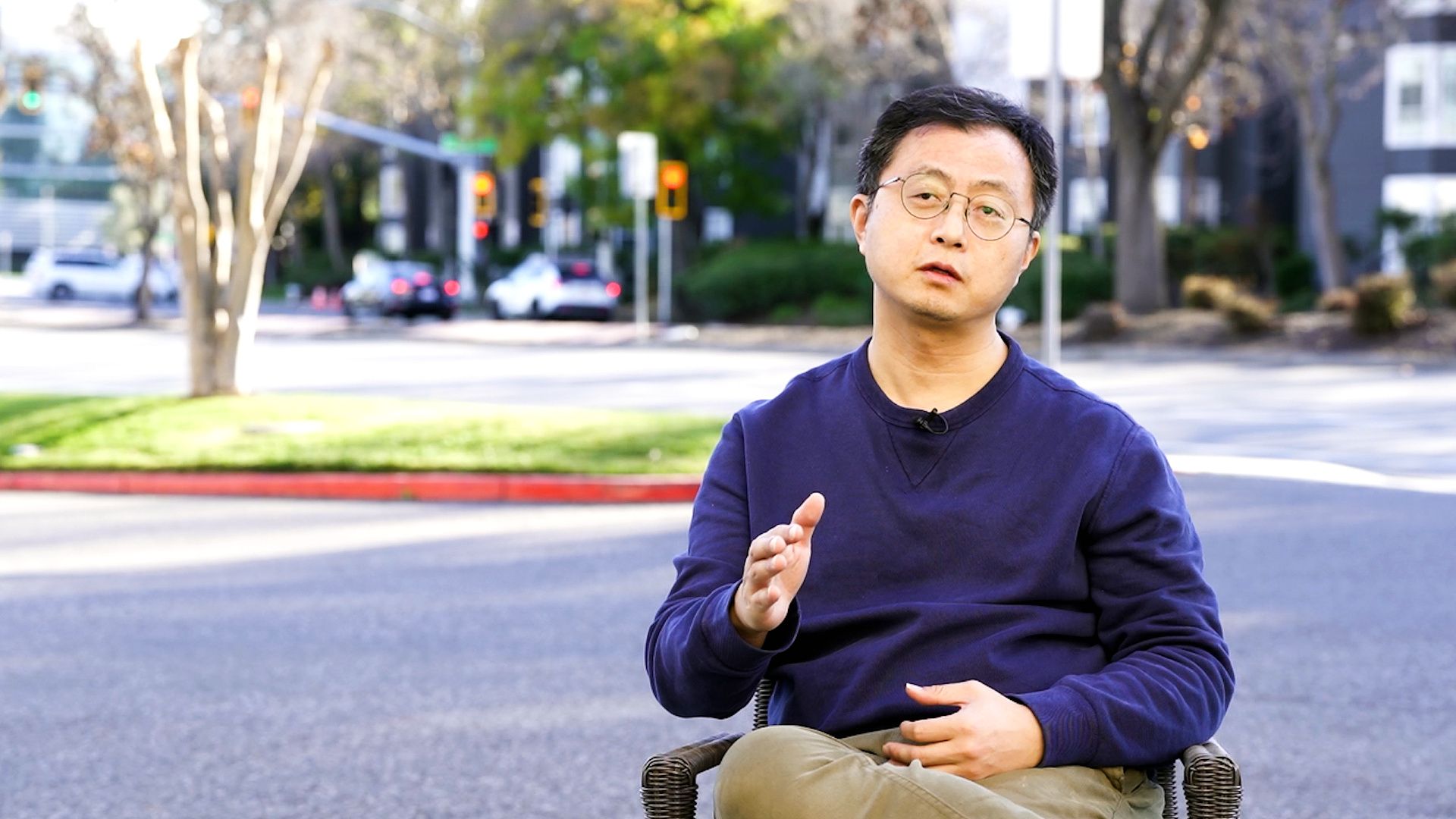
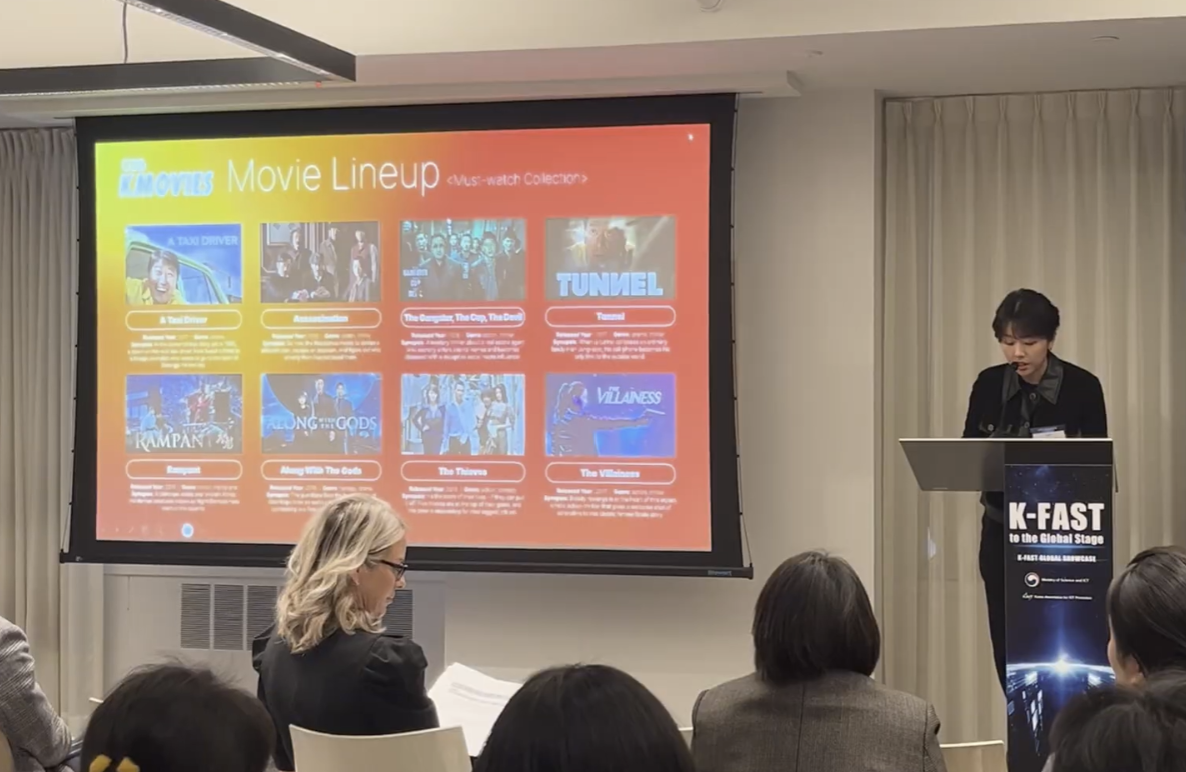
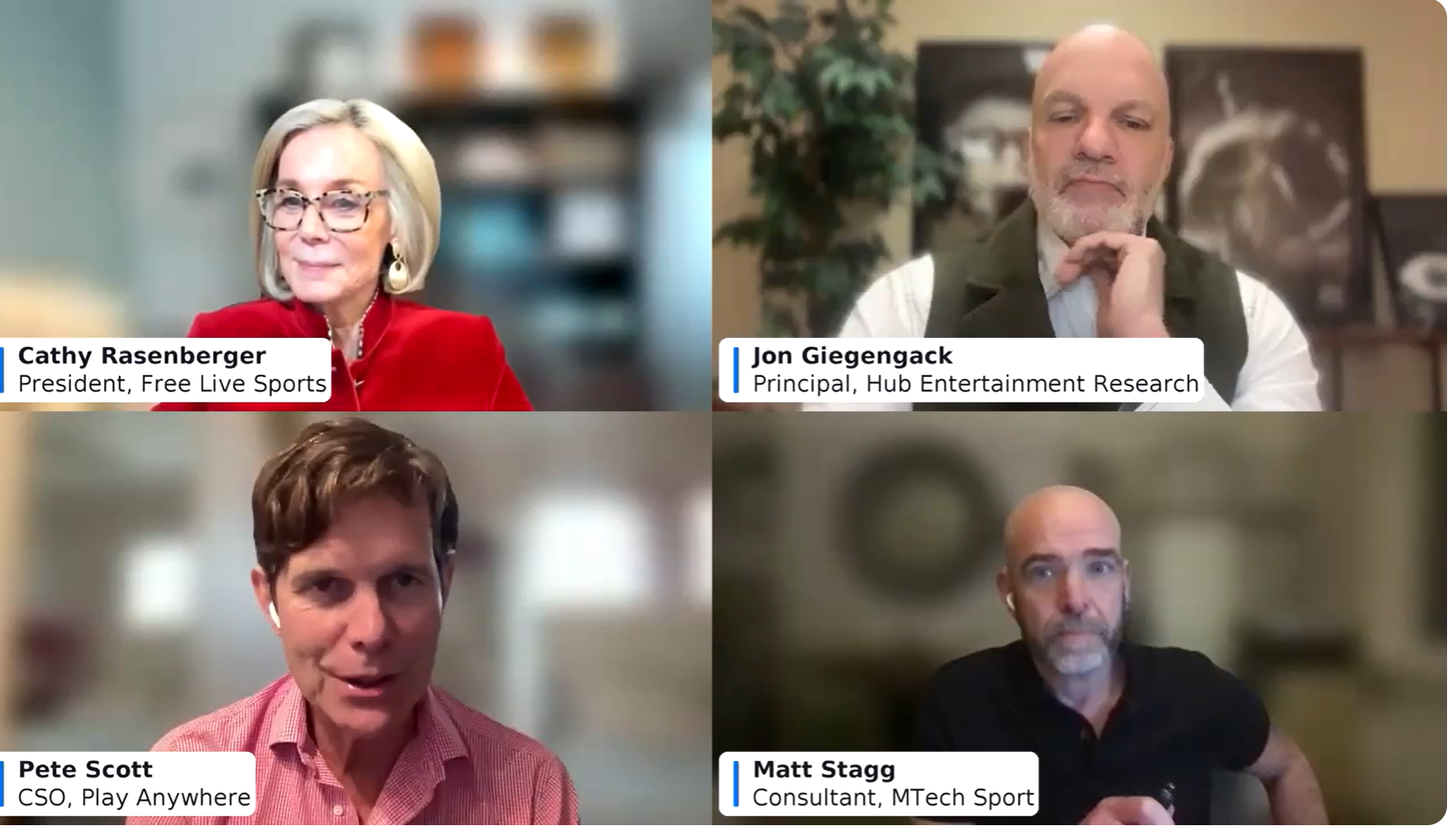

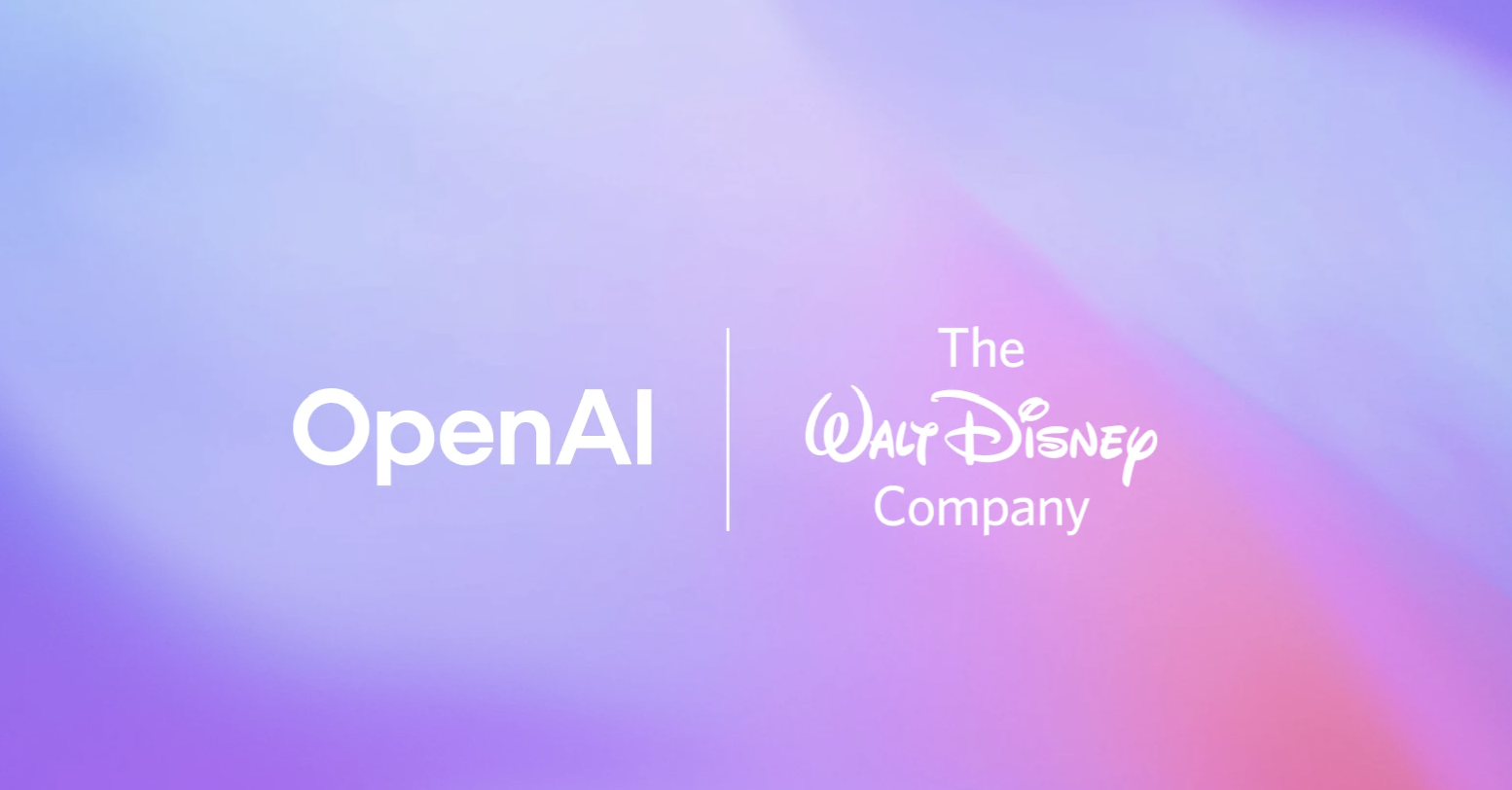
![[보고서]디즈니의 IP 플라이휠, 1957년 메모에서 시작된 100년 전략](https://cdn.media.bluedot.so/bluedot.kentertechhub/2025/12/vtekpo_202512140501.png)
![[리포트]글로벌 스트리밍 대전환과 FAST 시장의 부상](https://cdn.media.bluedot.so/bluedot.kentertechhub/2025/12/7jw8up_202512120304.png)
![[보고서]K-콘텐츠, 몰입형 공간 새로운 경험](https://cdn.media.bluedot.so/bluedot.kentertechhub/2025/12/je15hi_202512061434.png)
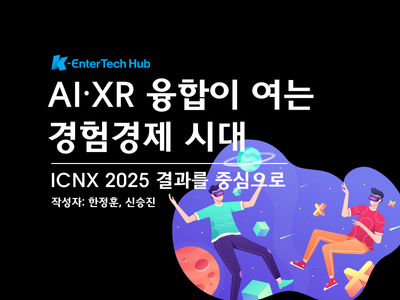
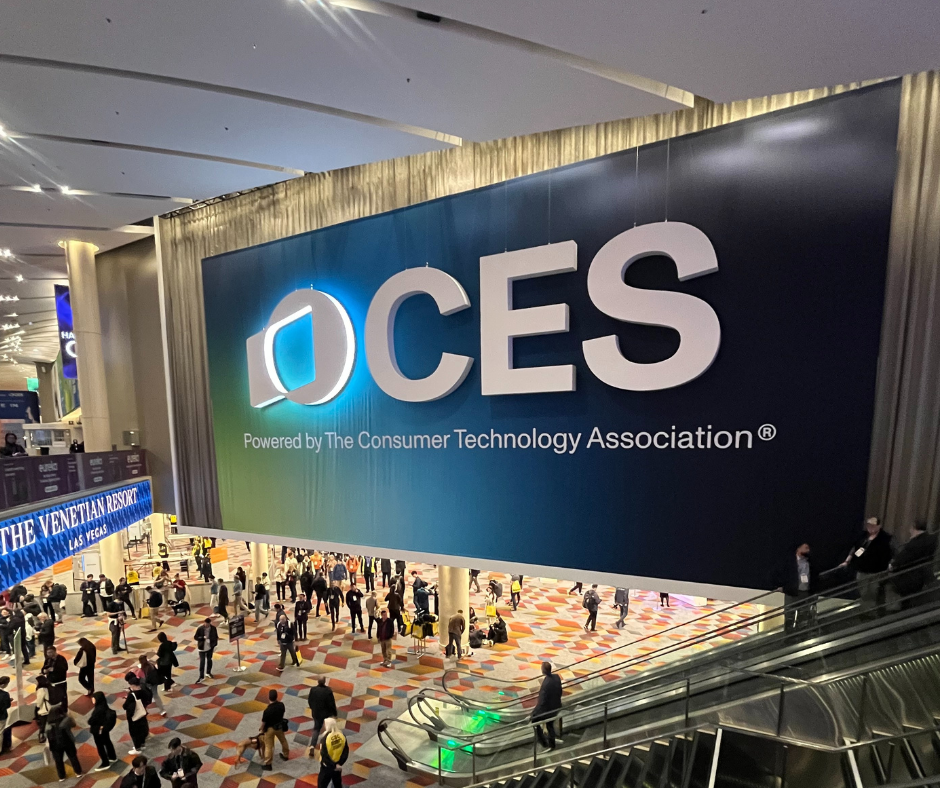
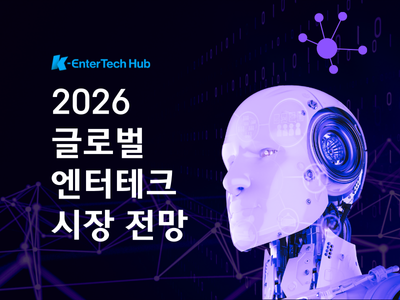
![[K콘텐츠와 K FAST]](https://cdn.media.bluedot.so/bluedot.kentertechhub/2025/11/zxwbgb_202511241038.jpg)
![[모집]1월 9일~14일 글로벌 AI 스템 캠프(자료집)](https://cdn.media.bluedot.so/bluedot.kentertechhub/2025/11/3kf0x5_202511031830.png)
![[MIPCOM2025]글로벌 엔터테인먼트 트렌드](https://cdn.media.bluedot.so/bluedot.kentertechhub/2025/10/duxlsp_202510170000.png)
![[보고서]생성AI와 애니메이션](https://cdn.media.bluedot.so/bluedot.kentertechhub/2025/09/c49fxu_202509271057.png)